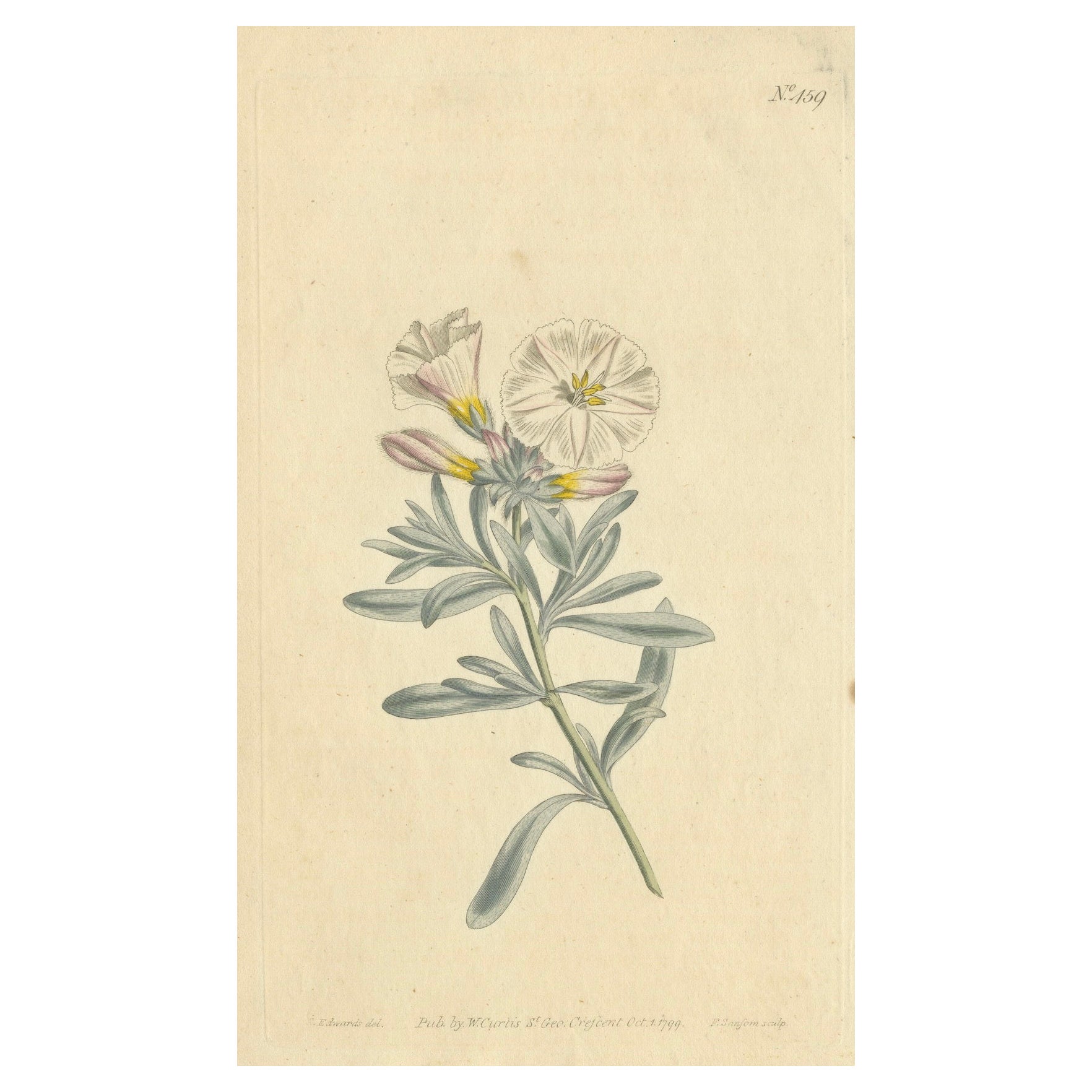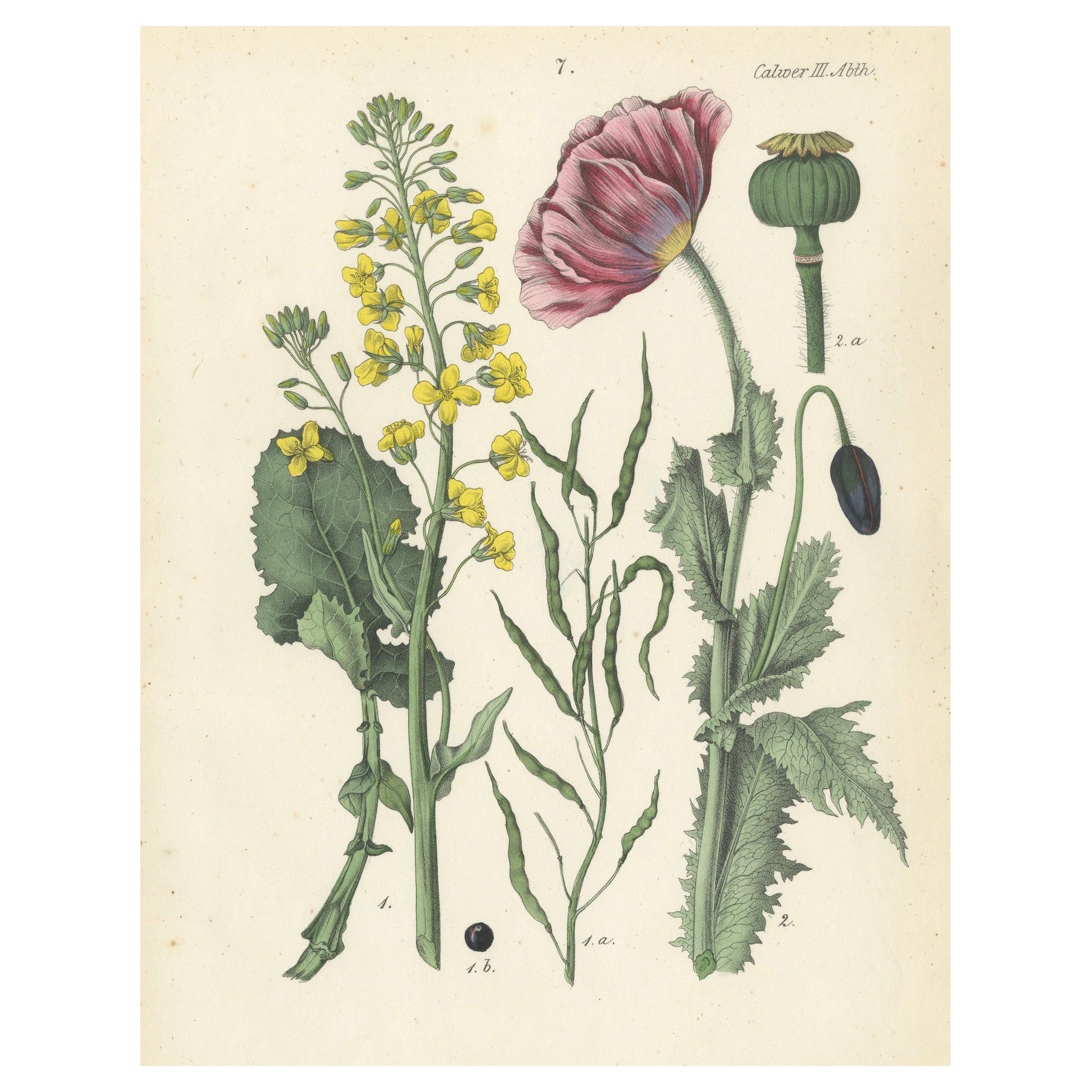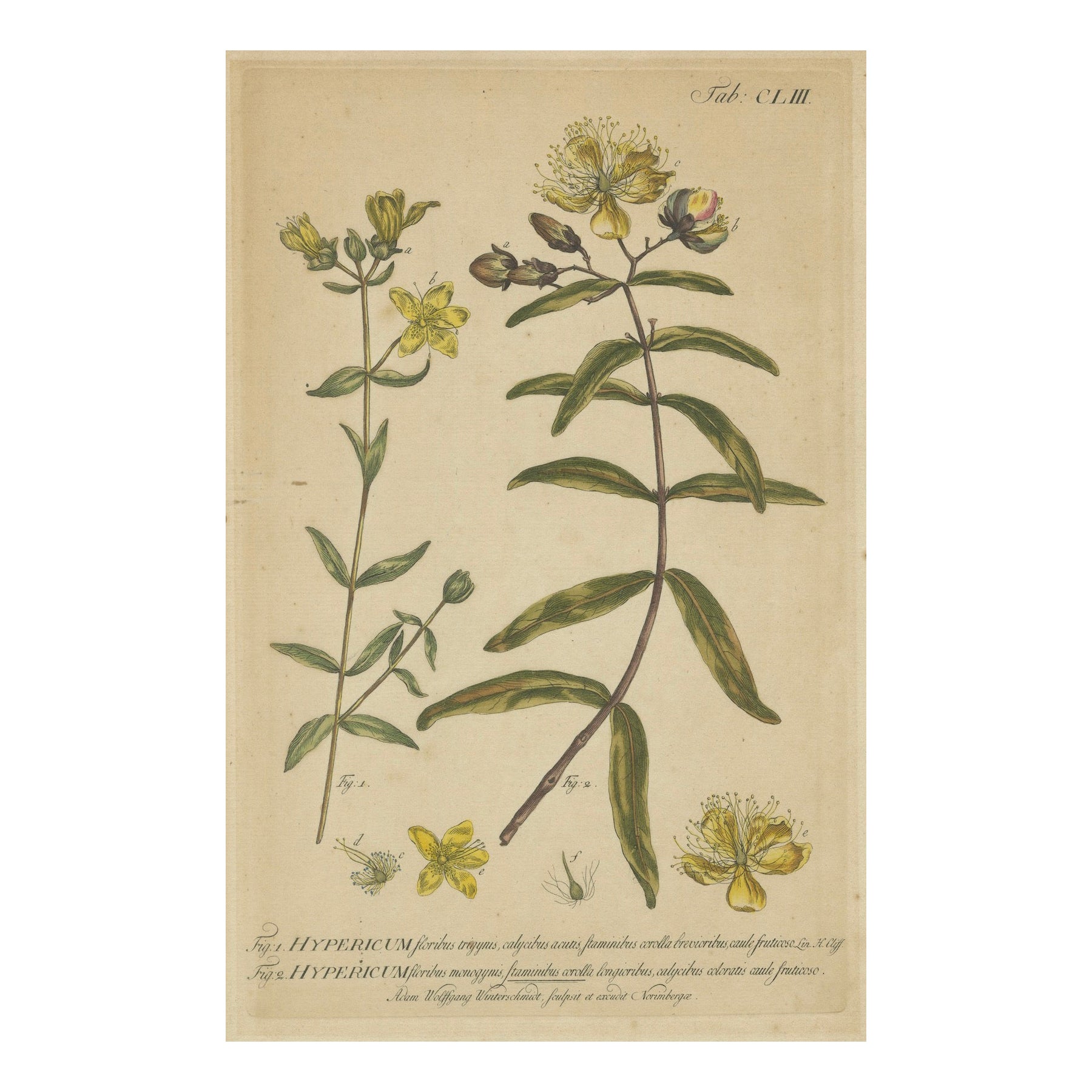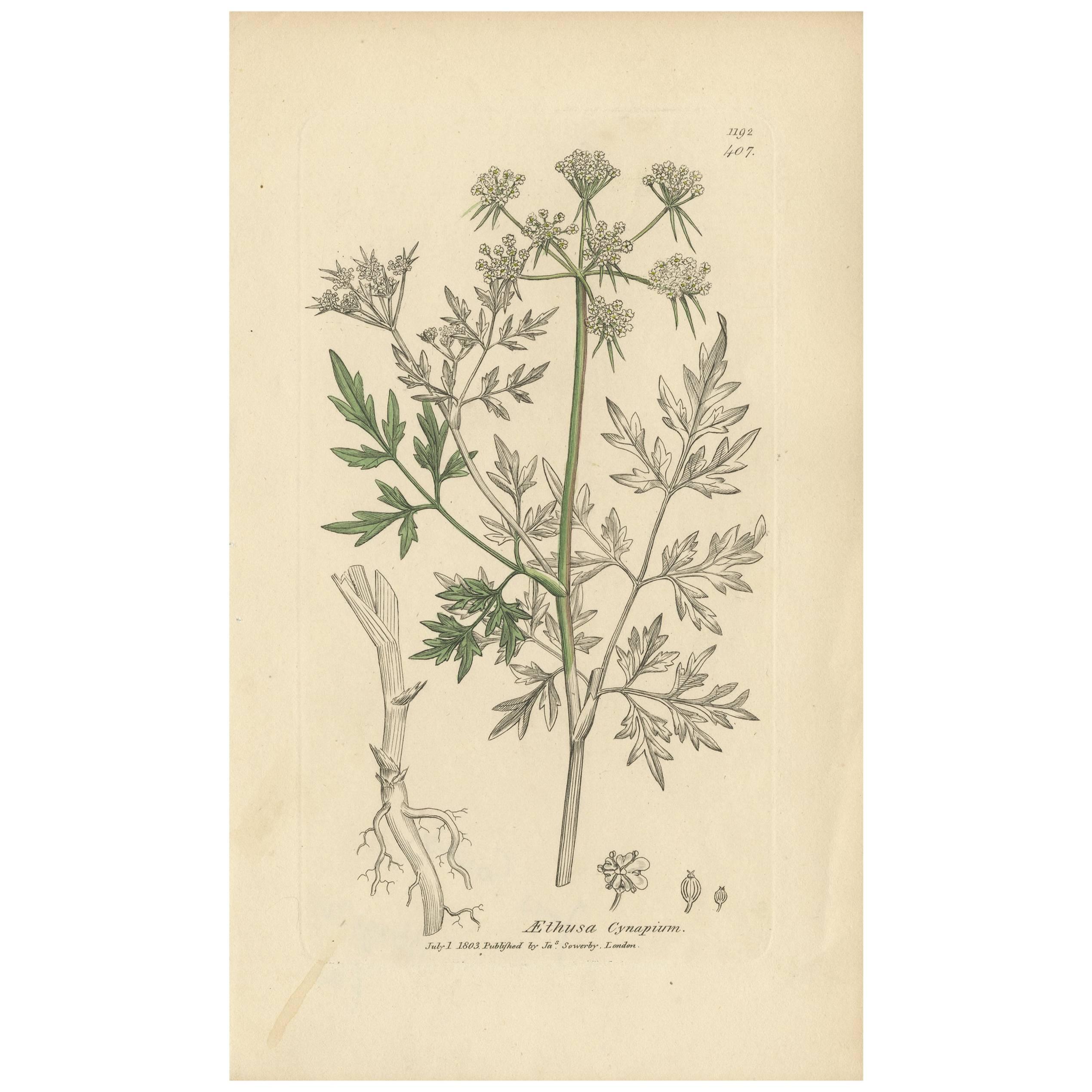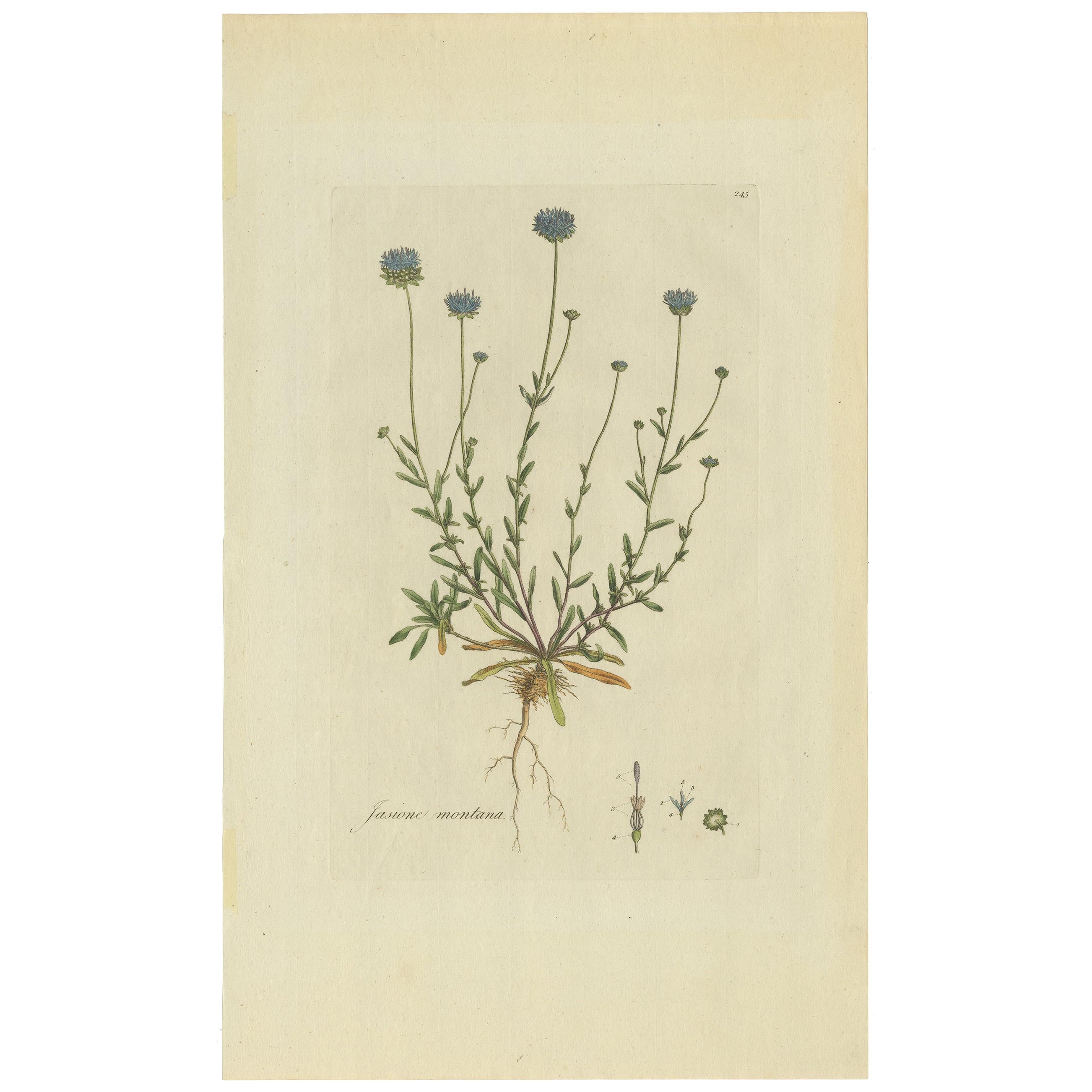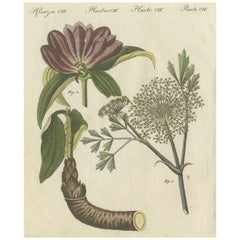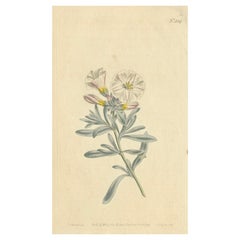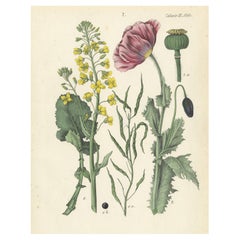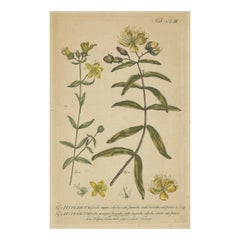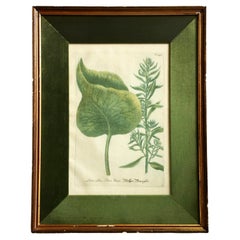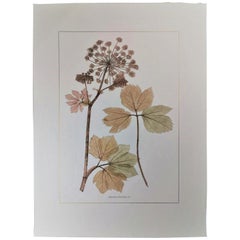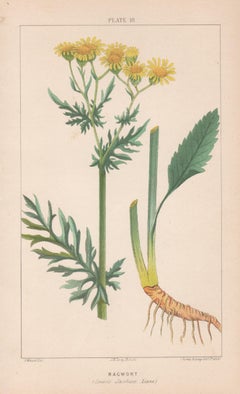Items Similar to Botanical Print: Papaver and Hieracium Species from a Natural History Collection
Want more images or videos?
Request additional images or videos from the seller
1 of 6
Botanical Print: Papaver and Hieracium Species from a Natural History Collection
$152.70
$190.8720% Off
£112.88
£141.1020% Off
€128
€16020% Off
CA$211.80
CA$264.7520% Off
A$230.91
A$288.6420% Off
CHF 122.01
CHF 152.5120% Off
MX$2,839.65
MX$3,549.5720% Off
NOK 1,517.08
NOK 1,896.3520% Off
SEK 1,428.13
SEK 1,785.1620% Off
DKK 974.65
DKK 1,218.3220% Off
About the Item
Botanical Engraving: 'Papaver' and 'Hieracium' Species from Early 19th-Century Natural History Collection
This botanical engraving is a beautifully detailed plate showcasing two plants with remarkable precision and artistry, originating from a collection of early 19th-century botanical illustrations. Here's a detailed description:
This fine botanical engraving features two distinct plants:
1. Figure 1: A member of the Papaver genus, resembling a poppy with its distinctive blue-tinged petals, seed pod, and finely dissected leaves. The detailed rendering of the root system highlights the plant's structure, offering both scientific and artistic appeal.
2. Figure 2: Likely a species of Hieracium (hawkweed), characterized by its bright yellow flowers and toothed leaves. The plant’s branching stems and buds are meticulously illustrated, emphasizing its natural elegance and botanical significance.
This engraving exemplifies the neoclassical fascination with nature, where scientific accuracy blends seamlessly with artistic beauty. Published as part of a natural history portfolio, this plate served both educational and decorative purposes, appealing to botanists, naturalists, and art enthusiasts alike.
Condition: Well-preserved with light foxing and minor discoloration, typical of engravings of this age. Colors remain vibrant, showcasing the plant’s natural hues.
Advice on Presentation:
1. Framing:
- Choose a simple frame, such as walnut or a light wood finish, to complement the botanical theme.
- Use acid-free matting in a soft cream or pale green to highlight the natural tones of the engraving.
2. Display Ideas:
- Hang in a grouping with similar botanical engravings for a curated gallery wall.
- Place individually in a study, library, or conservatory to emphasize its scientific and artistic charm.
3. Conservation:
- Protect the engraving with UV-filtering glass to preserve its vibrant colors.
- Avoid direct sunlight and humid environments to maintain its condition.
This engraving is a wonderful example of early botanical art, offering a timeless blend of scientific curiosity and aesthetic sophistication. Perfect for collectors, naturalists, or as a centerpiece in botanical-inspired decor.
The *Papaver* genus, commonly known as poppy, includes several species with various uses in medicine, culinary applications, and ornamental gardening. Here are the main uses:
### Medicinal uses
1. Pain relief and sedation: The opium poppy (*Papaver somniferum*) is the source of opiates such as morphine, codeine, and thebaine, which are widely used in modern medicine to manage pain, induce sedation, and treat severe coughs. These alkaloids have been historically important and continue to be essential in pharmaceuticals.
2. Traditional medicine: In many cultures, poppy extracts and seeds have been used in folk remedies for insomnia, anxiety, and gastrointestinal issues.
3. Homeopathic uses: Certain poppy species are used in homeopathy to treat conditions such as respiratory distress, headaches, and sleep disorders.
### Culinary uses
1. Poppy seeds: The seeds of *Papaver somniferum* are edible and widely used in baking and cooking. They are found in breads, pastries, and desserts in many cuisines worldwide. Poppy seeds are a good source of dietary fiber, essential fatty acids, and minerals like calcium and magnesium.
2. Poppy seed oil: Extracted from the seeds, the oil is used in cooking, salad dressings, and as a carrier oil in cosmetics.
### Ornamental uses
1. Garden plants: Many species, such as the corn poppy (*Papaver rhoeas*) and the Oriental poppy (*Papaver orientale*), are cultivated for their vibrant and showy flowers. Poppies are popular in landscaping and hold symbolic meaning in various cultures, such as the remembrance poppy.
### Toxicity and caution
While certain *Papaver* species are safe, others contain alkaloids that can be toxic if consumed improperly. The cultivation of opium poppy is regulated in many countries due to its potential for misuse.
- Dimensions:Height: 9.06 in (23 cm)Width: 7.49 in (19 cm)Depth: 0.01 in (0.2 mm)
- Materials and Techniques:Paper,Engraved
- Period:
- Date of Manufacture:1805
- Condition:Condition: Well-preserved with light foxing and minor discoloration, typical of engravings of this age. Colors remain vibrant, showcasing the plant’s natural hues. Please study the images carefully.
- Seller Location:Langweer, NL
- Reference Number:Seller: BG-14000-371stDibs: LU3054342874962
About the Seller
5.0
Recognized Seller
These prestigious sellers are industry leaders and represent the highest echelon for item quality and design.
Platinum Seller
Premium sellers with a 4.7+ rating and 24-hour response times
Established in 2009
1stDibs seller since 2017
2,620 sales on 1stDibs
Typical response time: <1 hour
- ShippingRetrieving quote...Shipping from: Langweer, Netherlands
- Return Policy
Authenticity Guarantee
In the unlikely event there’s an issue with an item’s authenticity, contact us within 1 year for a full refund. DetailsMoney-Back Guarantee
If your item is not as described, is damaged in transit, or does not arrive, contact us within 7 days for a full refund. Details24-Hour Cancellation
You have a 24-hour grace period in which to reconsider your purchase, with no questions asked.Vetted Professional Sellers
Our world-class sellers must adhere to strict standards for service and quality, maintaining the integrity of our listings.Price-Match Guarantee
If you find that a seller listed the same item for a lower price elsewhere, we’ll match it.Trusted Global Delivery
Our best-in-class carrier network provides specialized shipping options worldwide, including custom delivery.More From This Seller
View AllGalbanum and Hungarian Gentian: Rare Medicinal Plants Illustrated, 1805
Located in Langweer, NL
"Galbanum and Hungarian Gentian: Rare Medicinal Plants Illustrated, 1805"
This stunning hand-colored copperplate engraving depicts two remarkable plants: the Galbanum (*Ferula galba...
Category
Antique Early 1800s Prints
Materials
Paper
Antique Botanical Engraving of Silverbush - Rare 1799 Floral Print by Curtis
Located in Langweer, NL
Antique Botanical Engraving of Convolvulus Cneorum - Rare 1799 Floral Print by William Curtis
This engraving is from the publication "The ...
Category
Antique 1790s Prints
Materials
Paper
$133 Sale Price
20% Off
Hand-Colored Botanical Lithograph of Rapeseed and Poppy, Calwer, 1854
Located in Langweer, NL
Hand-Colored Botanical Lithograph of Rapeseed and Poppy, Calwer, 1854
This stunning botanical lithograph is from Carl Georg Calwer’s *Deutschlands Technische Pflanzen* (1854), a d...
Category
Antique 1850s Prints
Materials
Paper
Exquisite 1755 St. John's Wort Botanical Engraving by Philip Miller
Located in Langweer, NL
A copper engraving of Hypericum plants, commonly known as St. John's Wort, from Philip Miller's influential work, *Figures of the Most Beautiful, Useful and Uncommon Plants Described...
Category
Antique 1750s Prints
Materials
Paper
$209 Sale Price
20% Off
Antique Botany Print 'Aethusa Cynapium' by J. Sowerby, 1803
Located in Langweer, NL
Antique print titled 'Aethusa Cynapium'. This print originates from Sowerby's English Botany, or colored figures of British plants, 1803.
Category
Antique Early 19th Century Prints
Materials
Paper
Antique Botany Print of the Jasione Montana by Curtis, circa 1777
Located in Langweer, NL
Antique botany print titled 'Jasione Montana'. Hand colored engraving of the jasione montana, a low-growing plant in the family Campanulaceae found in rocky places and upland regions...
Category
Antique Late 18th Century Prints
Materials
Paper
$286 Sale Price
20% Off
You May Also Like
1736-45 Framed Botanical Engraving, Johann Wilhelm Weinmann
By Johann Wilhelm Weinmann
Located in Louisville, KY
Framed Botanical Engraving, Johann Wilhelm Weinmann. Johann Wilhelm Weinmann (German 1683-1741) Published in Amsterdam & Ratisbon, 1736-45....
Category
Antique Mid-18th Century German Other Prints
Materials
Velvet, Giltwood, Paper
Pair Of Antique Hand Colored Botanical Prints
Located in Bridgeport, CT
Taken after “La Botanique Mise a la Portee de Tout le Monde”, originally published in Paris 1774-1780, written by Nicolas Francois Regnault and illustrated by his wife, Genevieve de ...
Category
Antique 19th Century Country Prints
Materials
Glass, Wood, Paper
$2,250 / set
Italian Contemporary Hand Painted Botanical Print Representing Apiaceous Plants
Located in Scandicci, Florence
Elegant hand-watercoloured print representing Imperatoria Ostruthium, a flowering plant belonging to the family Apiaceae, painted with notes of antique rose and light blue color shad...
Category
21st Century and Contemporary Italian Prints
Materials
Paper
Ragwort (Senecio Jacobaea), antique botanical lithograph
Located in Melbourne, Victoria
'Ragwort (Senecio Jacobaea, Linne)
Colour lithograph, 1909.
Category
Early 20th Century Naturalistic More Prints
Materials
Lithograph
Botanical Print, Corona Imperialis Polvanthus, After Basil Besler
By Basilius Besler
Located in Bradenton, FL
The hand-colored botanical print, Corona Imperialis Polyanthos or Crown Imperial Lily, was originally by Basil Besler (1561-1629) a Nuremberg, Germany pharmacist, and published in t...
Category
20th Century German Baroque Prints
Materials
Paper
Italian Contemporary Hand Painted Botanical Print "VI° Feuilles de Fleurs"
Located in Scandicci, Florence
Elegant hand-watercoloured print representing "VI° Feuilles de Fleurs" a collection "Dessines par Carl et Gre es par Roubillac".
This botanical style print is available in 2 differe...
Category
21st Century and Contemporary Italian Wallpaper
Materials
Paper
More Ways To Browse
Dior Cane
Door Stopper
Dorothy Draper For Henredon
Drexel Heritage Burl Wood
Drexel Heritage French Provincial
Early American Blanket Chest
Ebony Head
Edo Japanese Screen Kano
Emperor Maximilian
English Regency Bamboo
Erte Porcelain Plates
Espana Chest
Federal Tilt Top Table
Floor Statue
Folding Clock
France Bertin
Fremiet Bronze
French Baroque Commode

